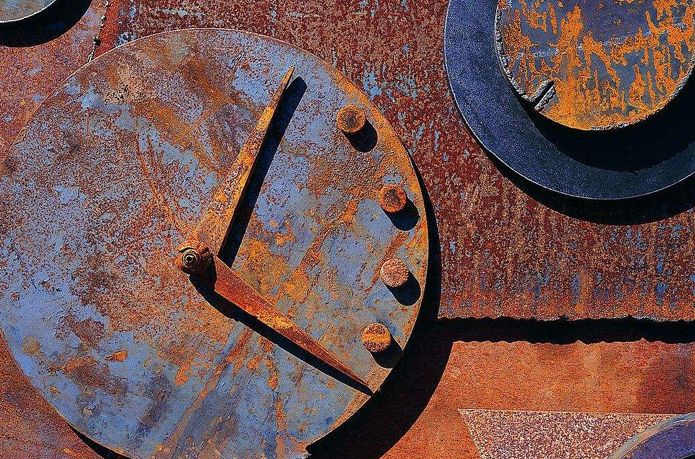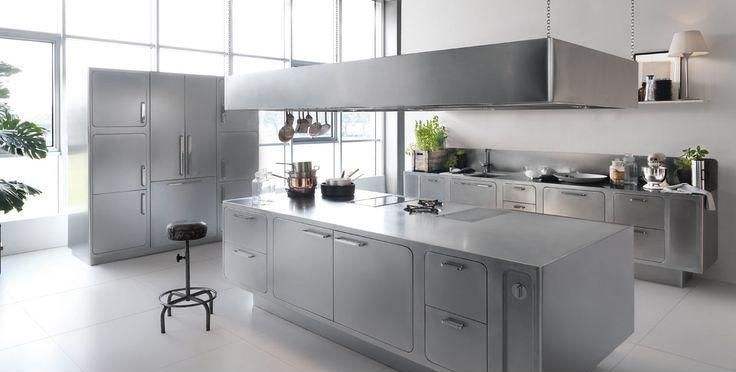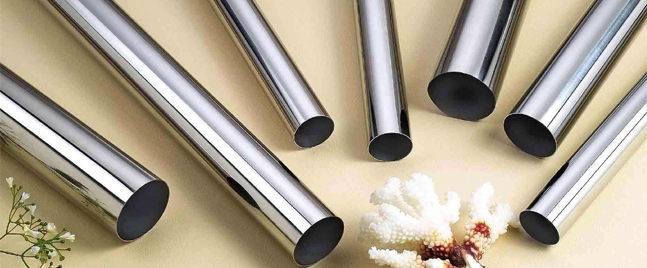Judging by the name, you might assume that stainless steel never stains—but you’d be wrong.
Stainless steel stains more easily than other iron-based metals, but it is not literally “stainless steel”. Just like standard steel, stainless can be marked with fingerprints and oil, cause discoloration, and eventually rust. The difference is resilience. Stainless steel can withstand more time and abuse before showing signs of wear.
All steels have the same basic iron and carbon composition, but stainless steels also contain a healthy dose of chromium—an alloy that gives stainless steels their famous corrosion resistance.
And this is where things get complicated. There are several grades under the stainless steel umbrella, each with a slightly different alloy composition, and therefore slightly different physical characteristics.
Stainless steel must contain at least 10.5 percent chromium. Depending on the grade, it may contain much higher levels of chromium, and additional alloying materials such as molybdenum, nickel, titanium, aluminum, copper, nitrogen, phosphorus, and selenium.
The two most common stainless steel grades are 304 and 316. The main difference is the addition of molybdenum, an alloy that drastically increases corrosion resistance, especially for environments with more salts or chlorides. 316 stainless steel contains molybdenum, but 304 does not.
For outdoor furniture such as rails and bollards, stainless steel is an ideal corrosion-resistant material, but it will only withstand long-term exposure if the levels are appropriate for its environment. 304 is an economical and practical choice for most environments, but it lacks the chloride resistance of 316. The slightly higher price point of 316 is well worth it in areas with high chloride exposure, especially beaches and highways that are very salty. Each application for stainless steel has its own unique demands, and requires stainless steel that fits the task.
Natural corrosion resistance

Corrosion is a natural phenomenon. Pure elements always react with the surrounding environment, which is why very few elements are found naturally in their pure form. Iron is no exception.
In wet or humid conditions iron reacts with oxygen contained in water to form iron oxide, also known as rust. Red flake oxides break down easily—exposing more material to corrosion. Standard carbon iron and steel are very susceptible to this type of corrosion.
Stainless steel has an innate ability to form a passive coating that prevents corrosion. Secret?
chromium.
The chromium found in all stainless steels reacts quickly with the oxygen environment, just like iron. The difference, however, is that only a very fine chromium layer will oxidize (often only a few molecules in thickness). Unlike flaky and unstable iron oxide, chromium oxide is very durable and unreactive. It adheres to the surface of stainless steel and will not move or react further with other materials. It also self-renews—if removed or damaged, more chromium will react with oxygen to replenish the barrier. The higher the chromium content, the faster the barrier repairs itself.
Once oxidized, or passive, stainless steel typically rusts at a very low rate, less than 0.002 inches per year. When stored at its best, stainless steel offers a clean, bright surface that is ideal for many building and landscape designs.
304 Stainless Steel
304 stainless steel is the most commonly used form of stainless steel worldwide, largely due to its excellent resistance and value to corrosion. It contains between 16 and 24 percent chromium and up to 35 percent nickel, as well as small amounts of carbon and manganese.
The most common form of 304 stainless steel is 18-8, or 18/8, stainless steel, which contains 18 percent chromium and 8 percent nickel.
304 can resist corrosion of most oxidizing acids. That durability makes the 304 easy to clean, and therefore ideal for kitchen and food applications. It is also common in building, décor, and site furniture.
304 stainless steel does have one drawback: it is susceptible to corrosion from chloride solutions, or from salty environments such as beaches. Chloride ions can create localized areas of corrosion, called “pitting”, which can diffuse under chromium shielding to disrupt internal structures. Solutions with as little as 25 ppm sodium chloride can begin to have corrosive effects.
316 Stainless Steel
Grade 316 is the second most common form of stainless steel. It has almost the same physical and mechanical properties as 304 stainless steel, and contains similar make-up ingredients. The main difference is that 316 stainless steel contains about 2 to 3 percent molybdenum. The addition increases corrosion resistance, especially to chlorides and other industrial solvents.
316 stainless steel is commonly used in many industrial applications involving processing chemicals, as well as high salinity environments such as coastal areas and outdoor areas where de-icing salts are common. Due to its non-reactive qualities, 316 stainless steel is also used in the manufacture of medical surgical instruments.
Alternate series 300 grades can contain up to 7 percent molybdenum. They provide better chloride resistance, but such heavy-duty resistance is required only in conditions of industrial exposure or high concentrations.
Versatile application

Both stainless steels 304 and 316 (as well as other 300 series grades) use nickel to maintain an austenitic composition at lower temperatures. Austenitic steel ensures a versatile balance of strength, workability and corrosion resistance, making it ideal for outdoor architectural features, surgical instrumentation and food processing equipment.
The large quantities of stainless steel produced today (especially stainless steel 316) can be found in products related to the food and beverage industry. Stainless steel is commonly found in commercial kitchens and food processing plants because it serves a variety of needs:
It can be easily shaped and made into the shape needed to produce various appliances and machines, such as cooking tables, ventilation hoods, tanks, and hoppers.
It is available in a variety of decorative and polished finishes.
It can withstand shocks and abrasive conditions found in kitchens or food processing plants.
It can be easily cleaned, and is resistant to repeated washing with many chemicals and detergents used to meet public health demands.
It does not react to alkalis and acids found in milk, cooked foods, vegetables, and food additives.
The main benefits of stainless steel include a long service life that will maintain an attractive and clean finish. Properly maintained and cleaned stainless steel provides low maintenance costs.






